(Italian pronunciation: bah-dee-ah fyoh-ren-teen-ah)
Via del Proconsolo and Via Dante Alighieri
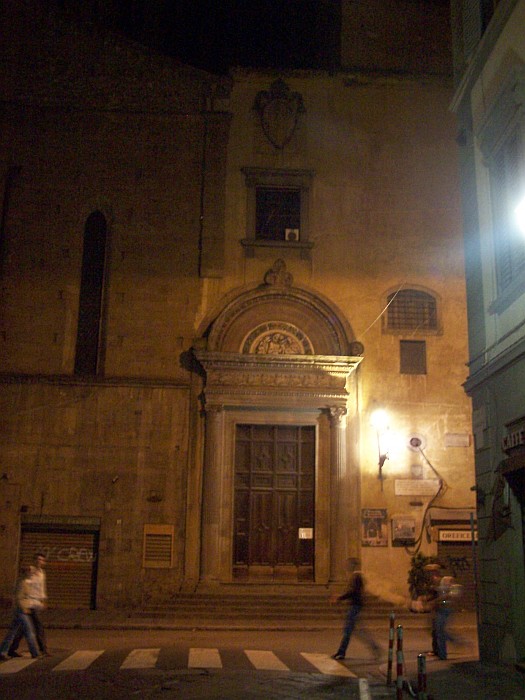

The Abbey, one of Florence's oldest churches, was founded by Willa, the widow of Count Uberto of Tuscany. Their son, Count Ugo, was buried inside the church in 1001. His splendid tomb was carved by Mino da Fiesole and dates from 1469-1481. Mino also carved the altarpiece and, in the right transept, the tomb of Bernardo Guigni, the Florentine statesman, with its fine effigy of Justice.
The Badia Fiorentina was commissioned for the Benedictines by Willa, mother of Marquis Ugo of Tuscany, in 978. In 1285 the church was completely restructured by Arnolfo di Cambio, who placed the apse towards Via del Proconsolo and the entrance to the church across from it, within the monastic complex.

Towards the end of the 1400s the monastery was expanded, and the Chiostro degli Aranci and the portico in the atrium were built. In 1627 the church was again restructured, by Matteo Segalini. Arnolfo's 13th century plan was reduced to a Greek Cross, the orientation of the church was rotated 90 degrees, a new choir was built on the church's southern side, and the entrance was shifted to what had been the 15th century atrium. The flank of the church paralleling Via del Proconsolo was thus the back of the 12th century structure. The present entrance, which was opened in 1494, is framed by a 19th century copy of the doorway built by Benedetto da Rovezzano, who also did the internal portico with the Corinthian columns.
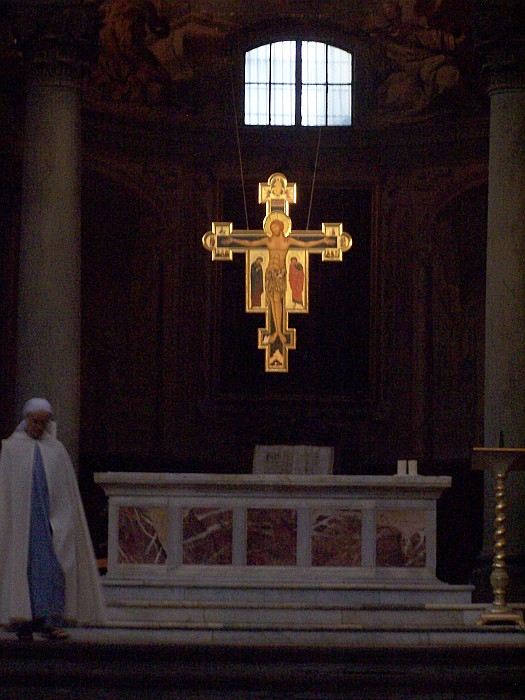
view a short movie clip of the Badia during Vespers (mov. format - 11 mb)
Within the Badia, in the left transept (what was originally the wall of the apse), the present inlayed cantoria englobes the main altarpiece Giorgio Vasari painted in 1568 to substitute for an altarpiece by Giotto that is now in the Uffizi. Under the cantoria is Mino da Fiesole's marble and porphyry tomb of Marquis Ugo di Toscana, who died in 1001. The entrance to the Chiostro delle Aranci is to the right of the presbytery. One of Florence's most striking Early Renaissance monuments, it was built by Bernardo Rossellino between 1432 and 1438. To the right, as one exits the church, is the Apparition of the Virgin to Saint Bernard, a masterpiece Filippino Lippi painted in 1485.

Within the church there is the Pandolfini Chapel, the space for which was obtained by restructuring and expanding the ancient church of Saint Stephen. This is where, in the 14th century, poet Giovanni Boccaccio held the first public reading of Dante's Divine Comedy. In keeping with the spirit of these meetings, the abbey is today often used for talks and concerts.
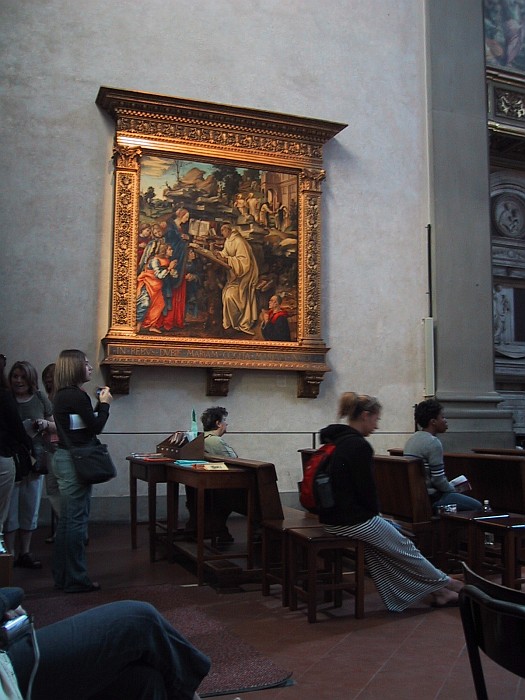
In 1485 Filippino Lippi painted the The Virgin Appearing to St. Bernard now in the Badia. It enlivens an otherwise solemn interior. Its remarkable detail, particularly in the landscape, makes it one of the most artistically significant works of the 15th century.
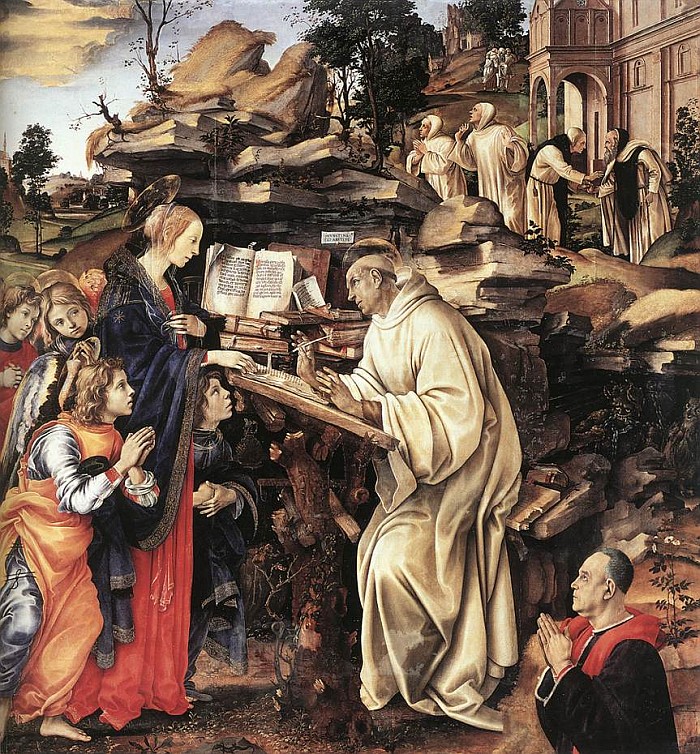
Given to a somewhat slower line than Botticelli, he nevertheless shared his former masterís love of elongated figures with impassive faces and elegantly attenuated hands. Filippino was a forthright colorist, and his interest in landscape structure and detail went well beyond Botticelliís The profusion of realistic detail in the representation of the saintís outdoor study gives the Vision more the character of a genre piece than an vocation of a mystical experience. It fairly glows in the rich variety and freshness of its color. Andres, The Art of Florence
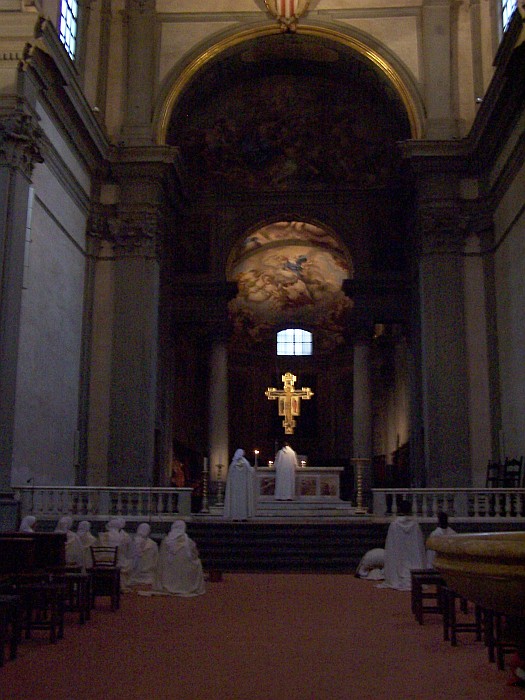
view another movie clip showing the interior of the Badia during Vespers (mov. format - 23 mb)
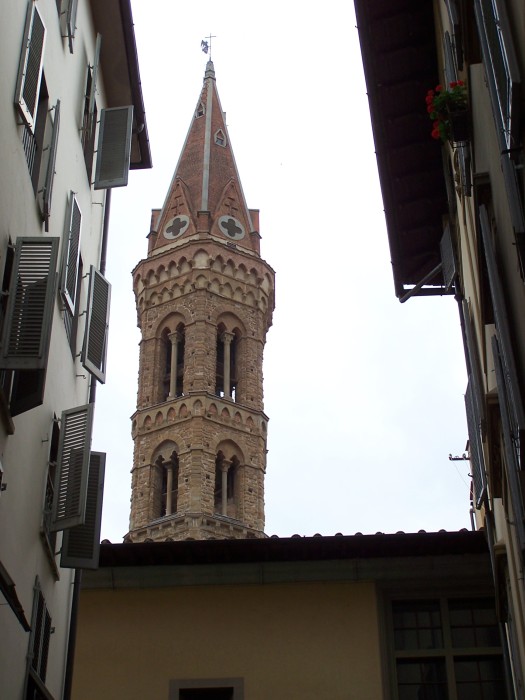
Excellent views of the hexagonal campanile, which gets mentioned by Dante in the Paradiso section of The Divine Comedy, can be enjoyed from the cloister, as well as from distant parts of Florence.